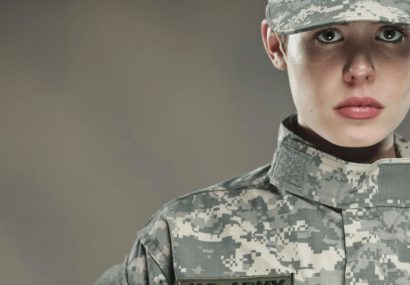DAV Study Details Significant Gaps in Services for Women in Health Care, Transition Services, Disability Compensation, Employment, Community Reintegration, Housing, and Eradication of Military Sexual Assault
WASHINGTON, D.C. (September 24, 2014)—While the federal government has raced to establish programs to serve combat veterans, the current system that awaits women transitioning from military service is a disjointed patchwork of programs marked by serious gaps in health care, housing, other community support services, employment and efforts to eradicate sexual assault, according to a landmark report released today by DAV (Disabled American Veterans).
Women Veterans: The Long Journey Home presents the most comprehensive assessment conducted to date of the policies and programs at the Departments of Veterans Affairs (VA), Defense (DoD), Labor (DoL), and Housing and Urban Development (HUD) for women veterans returning home. The report reveals that the number of women who volunteer to defend our nation is increasing dramatically, while they are being put at risk by a services and support system designed for and dominated by men.
Women Veterans: The Long Journey Home paints a compelling picture of federal agencies and community service providers that consistently fail to understand that women are impacted by military service and deployment differently than men. The report identifies 27 key policy and programmatic changes needed to overhaul the culture and services provided by the federal government and their local communities.
“At a time when the number of women veterans is growing to unprecedented levels, our country is simply not doing enough to meet their health, social and economic needs,” said Joy J. Ilem, DAV’s deputy national legislative director. “Women veterans deserve equal respect, consideration and care as the men who served, yet the support systems are ill-equipped to meet the unique needs of the brave women who have defended our country.”
[gview file=”http://www.dav.org/wp-content/uploads/women-veterans-study.pdf”]
Since the Civil War, women have served with distinction in the armed forces. However, in 1973, a two percent legislative cap on women’s participation in the military was lifted and women began entering military service at unprecedented rates. Today, women make up 20 percent of new recruits, 14.5 percent of the 1.4 million service members on active duty and 18 percent of 850,000 reservists. Approximately 280,000 women served in the post 9/11 Global War on Terrorism: Operations Enduring Freedom (OEF), Iraqi Freedom (OIF) and New Dawn (OND). Most of these women were directly exposed to combat and the daily threat of wartime violence.
Since the U.S. military is in the midst of a significant downsizing, many more women can be expected to transition out of service and back to lives as mothers, spouses, daughters, employees and neighbors. These women will depend on services provided by the federal government and local communities to help with the journey back to civilian life, a journey, the report reveals, that is often difficult, prolonged and presents different challenges than for men.
Women service members and veterans are less likely to be married than men, but more likely to be divorced, single parents, in a dual military relationship or part of non-traditional families. Studies also show that women are much more likely to identify interpersonal issues as a significant source of stress during reintegration and, at the same time, report less social support. Because of societal norms, women are consistently challenged to balance family, work and community roles in a way not experienced by men. The perceived demand to address all competing priorities simultaneously creates an enormous challenge for military women and transitioning women veterans. Most handle it without significant impacts, but many struggle in their journey home.
Visit www.DAV.org/womenveterans to read the entire report and recommendations.
DAV empowers veterans to lead high-quality lives with respect and dignity. It is dedicated to a single purpose: fulfilling our promises to the men and women who served. DAV does this by ensuring that veterans and their families can access the full range of benefits available to them; fighting for the interests of America’s injured heroes on Capitol Hill; and educating the public about the great sacrifices and needs of veterans transitioning back to civilian life. DAV, a non-profit organization with 1.2 million members, was founded in 1920 and chartered by the U.S. Congress in 1932.
 Previous Article
Previous Article Next Article
Next Article


























